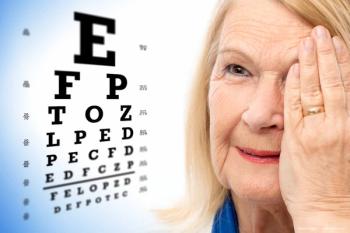
New surgical technique is effective for keratoconus
For the management of keratoconus, diamond-knife?assisted DALK is effective and predictable in patients with keratoconus, and may offer visual and refractive outcomes that are similar to those achieved with big-bubble DALK, according to a recently published study.
For the management of keratoconus, diamond-knife–assisted DALK is effective and predictable in patients with keratoconus, and may offer visual and refractive outcomes that are similar to those achieved with big-bubble DALK, according to a study recently published in the Journal of Cataract & Refractive Surgery.
Diamond-knife–assisted DALK is the most recent variation of DALK for cornea replacement, and is preceded by the big-bubble technique, in which air is injected into the corneal stroma to isolate Desçemet's membrane.
Researchers performed diamond-knife–assisted DALK in 19 eyes and big-bubble DALK in 11 eyes successfully. At 6 months, mean corrected distance visual acuity (CDVA) improved significantly, from 1.87 logMAR to 0.23 logMAR (P = 0.05). In addition, mean keratometry improved from 65.99 D to 45.13 D, and the mean keratometric cylinder improved from 7.99 D to 2.87 D (P = 0.05 for both).
Postoperatively, mean refractive astigmatism was 2.55 D and the mean spherical equivalent was -1.97 D. When comparisons were made between diamond-knife–assisted DALK and big-bubble DALK, the following values were comparable: CDVA (P = 0.06), postoperative keratometry (P = 0.64), refractive cylinder (P = 0.63), and endothelial cell loss (P = 0.11).
All surgeries were completed successfully, and there were no intraoperative or postoperative complications with the diamond-knife–assisted DALK.
To access the abstract of this study, click
Newsletter
Get the essential updates shaping the future of pharma manufacturing and compliance—subscribe today to Pharmaceutical Technology and never miss a breakthrough.













































